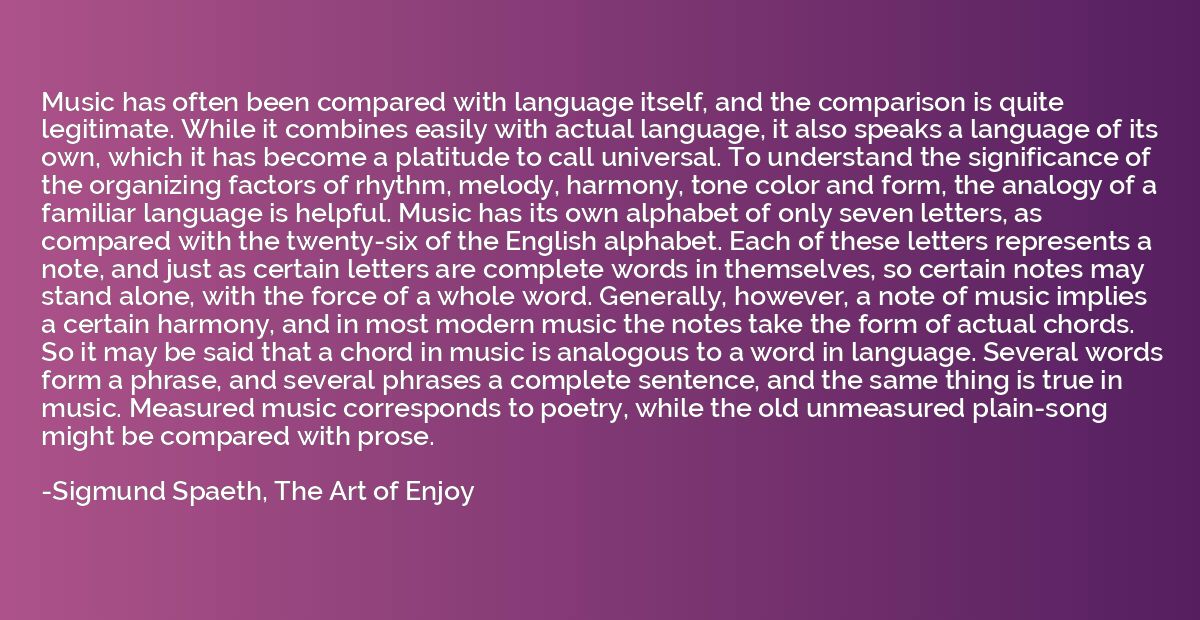Quote by Sigmund Spaeth, The Art of Enjoy
Music has often been compared with language itself, and the comparison is quite legitimate. While it combines easily with actual language, it also speaks a language of its own, which it has become a platitude to call universal. To understand the significance of the organizing factors of rhythm, melody, harmony, tone color and form, the analogy of a familiar language is helpful. Music has its own alphabet of only seven letters, as compared with the twenty-six of the English alphabet. Each of these letters represents a note, and just as certain letters are complete words in themselves, so certain notes may stand alone, with the force of a whole word. Generally, however, a note of music implies a certain harmony, and in most modern music the notes take the form of actual chords. So it may be said that a chord in music is analogous to a word in language. Several words form a phrase, and several phrases a complete sentence, and the same thing is true in music. Measured music corresponds to poetry, while the old unmeasured plain-song might be compared with prose.

Summary
This quote emphasizes the similarities between music and language. It suggests that just as language has its alphabet and words, music has its own set of organizing factors - rhythm, melody, harmony, tone color, and form. These elements work together to create music that can be understood universally. The quote compares musical notes to letters, chords to words, phrases to sentences, and measured music to poetry. It suggests that like language, music can convey meaning and evoke emotions, and that understanding the structure and components of music can be compared to understanding the structure of language.














